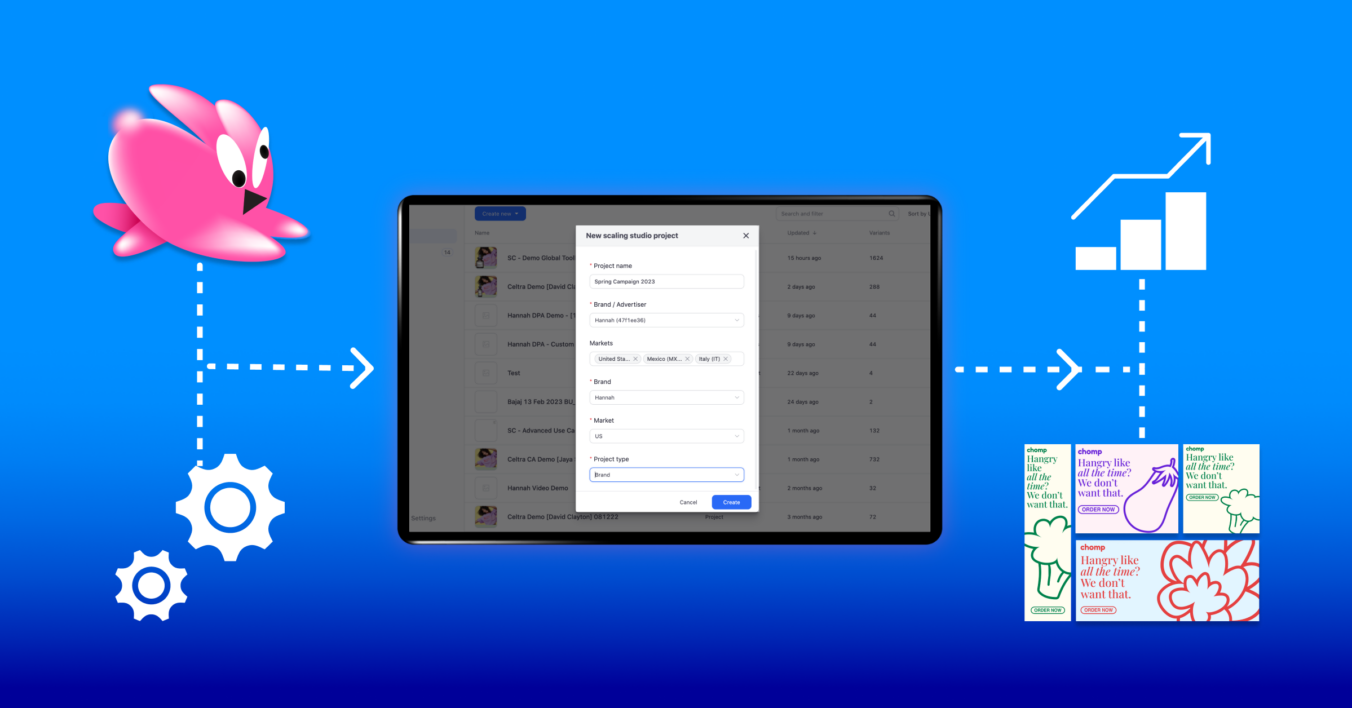Is improving workflow on your agenda? According to a survey by the Association of National Advertisers, companies that prioritize workflow efficiency see an average of 20% increase in productivity and a 12% reduction in costs.
Industry statistics show that global digital ad spending is projected to reach $935 billion by the end of 2023, with mobile advertising accounting for 72% of that total. With so much money at stake, it is crucial for companies to optimize their workflow processes in order to increase productivity and reduce costs.
Inefficiencies cost money and prevent you from focusing on the strategic decisions that drive your business forward. Although no company is truly immune to inefficiencies, it’s crucial for brands to assess every touchpoint of their workflows to avoid leaks where they can.
Not sure where to begin? To give you a head start, we’ve identified 6 of the most common workflow gaps and provided solutions to tighten them up.
1. Thoroughly define and document your processes
A workflow outline is foundational. It’s essential to organizing files, streamlining communication, and offering clear direction to employees. Without it, team members get stuck. When they’re unsure of who owns which task or next steps, they’ll either guess what to do (often inaccurately), spend time reaching out to others to figure it out or delay the action. Of course, all three waste time.
If this happens frequently, the time adds up significantly. Not to mention, the uncertainty breeds frustration or can even result in micromanagement. It’s up to managers to establish clarity from the get-go, considering all possible outcomes that might cause occasional changes to the normal chain of events. Be sure that all programs, allocations of responsibilities, and processes are determined and readily available to every relevant employee.
2. Use collaborative software
Too often, team members (or even entire teams) are working on different technologies. Since the whole company should have the same goals and, therefore, projects, fragmented technologies will make for challenging collaboration. Investing in software that brings all of your teams into one place helps on several levels. Celtra’s Creative Automation champions collaborative digital production to equip your in-house teams with a singular tool that allows you to scale, edit, comment, and tweak across artboards, multi-dimensional feeds and many other design properties. This multi-user access functionality will massively speed up your workflows while removing constant user management.

3. Simplify your workflow setups
A good rule of thumb for being economical with time — keep things as simple as possible. Generally, workflows aren’t designed to be complicated. It’s something that inevitably happens over time. The main culprits are; attempting to resolve confusion or a failure to question whether certain people, tasks, or programs are essential.
However, once resources are identified and pre-approved, the process can be mapped out visually. If you’ve never done this before, there’s plenty of material available about getting started. It’s then time to ask some questions. Does the flow resemble a spider web rather than a chain? Are there too many steps backward after moving forward? It should be evident pretty quickly whether your process has the potential to be simplified. Visualizing workflow diagrams also provides a shared language for team members to discuss and refine their processes. By providing a shared understanding of the process, teams are more collaborative, which leads to better teamwork, increased engagement, and a more positive work environment.
4. Make tracking transparent
It’s easy to get caught up in the day-to-day and consequently forget about tracking your creative production processes. But if you don’t know exactly where you are, how can you help move things along? Plus, it becomes challenging to accurately gauge the amount of time you’ll need to allocate for each stage in your processes. Team members with any responsibility, big or small, for planning and up-keeping your creatives need access to the latest status. Being transparent about the status of your work keeps the whole team on the same page.
5. Automate repetitive tasks
Technology is empowering. Largely because it enables us to do things faster and more accurately. Since new products are constantly hitting the market, it’s extremely important that you’re up-to-date on those that could improve your strategy. By adopting technology that can eliminate repetitive steps and functions, you’ll save a tremendous amount of time by cutting down production time as well as reducing human error, which requires additional steps to correct.






